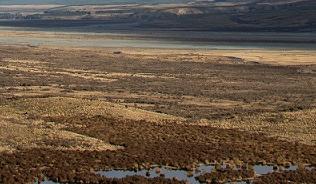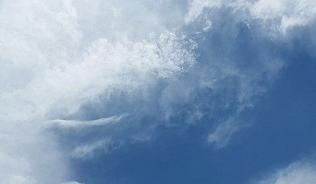In a nod to the festive season, we share our 12 days of IES highlights from what was been a very successful year.
12 Policy Initiatives
Throughout the year the IES has been promoting environmental science in government engaging in a wide range of topics. In January we wrote to Defra to urge caution on the award of new licences for exploration for mineral-rich polymetallic nodules. In April we team up with a whole range of other organisations to write two letters protesting the exclusion of climate change from the curriculum. In April and May we complained to Defra about the claims made in a Sunday Times Article on biodiversity offsetting, asked the Secretary of State for the Environment how he was intending to comply with the ruling that the UK was in breach of its obligations to comply with the nitrogen dioxide limit values, and encouraged the Secretary of State for Transport to invest in active transport. We engaged with BIS over Fracking and Defra over GMOs in June. Air quality was the focus towards the end of the year with the EPF urging Lord de Mauley to write a new Air Quality Strategy and we made two technical responses on the Sustainable Design and Construction SPD , Draft Supplementary Planning Guidance and responded to the call for evidence on the Clean Air Act.
11 Pieces of Analysis
The IES Analysis pages are where environmental science professionals come to debate environmental issues. 2013 kicked off with three articles around contaminated land legislation: one from a local authority's perspective, a technical perspective and a summary of the debate. We produced a podcast to coincide with our Olympics journal interviewing the Sustainability Manager at the ODA, and the Chair of the Commission for a Sustainable London 2012. In April Mark Everard wrote a fascinating blog entitled What is nature worth? In May we produced a technical note examining the current UK legislative landscape within which the local authority air quality management duties reside. Our graphic designer wrote a blog on what is means to be an ethical designer and the winner of the 2012 John Rose Award showcased her work supported by the prize money. In July Daniel Gosling urged us to recognise the importance of the high street and in August Andrew Grieve told us about the challenges of making an air quality phone app.
10 New CScis
After a short post-Grandparenting lull the number of new applicants to Chartered Scientist really began to pick up towards the end of the year with ten IES members achieving the designation. Find out how you can become a Chartered Scientist in 2014.
9 New Mentors
The IES mentoring scheme establishes partnerships between graduates and professionals seeking work and experienced members currently working in their chosen field. In 2013 we had 9 new mentors join the scheme but we are always looking for more. Could you help transform someone's career in 2014?
8 Members of Staff
The IES office is run by four permanent staff and a number of contractors. Many thanks to Ruth Bowyer, Adam Donnan, Emma Fenton, Darren Walker, Tom Grinsted, Caroline Beattie, Jenna Edgar and Steve Jones for all their hard work and dedication this year.
7 CEnv in a Day Workshops
Our one-day workshops continue to be the most popular method for suitably qualified environmentalists to achieve the CEnv designation. In 2013 we ran seven workshops helping 34 professionals through the process. Why not sign up for our next workshop in January 2014?
6 Careers talks
The IES continues to promote pathways into the environmental profession through its working with universities. The number of degree programmes we accredit rose to 64 across 23 institutions. As part of this work we did six career talks at universities around the country.
5 Journals
2013 was another great year for the environmental SCIENTIST. The year kicked off with London 2012: Sustainable Legacy?, a review of the Olympics published in conjunction with the Commission for a Sustainable London 2012. April saw a critical retrospective of the work of the air quality profession over the past few decades in Air Quality - should we have achieved more? We then published two sister journals looking at the efficacy of EU legislation in The EU - Red tape or green governance? followed by a domestic review in UK Regulation - Endless paperwork or essential protection? We ended the year with a look at how heritage fits into the environmental profession in a journal called Reading the landscape: heritage and the environment, which should arrive with member shortly after Xmas.
4 Reports
On top of all those journals we bought you four major reports in 2013. As usual we kicked the year off with our Annual Report and the results of our Membership Survey. We wrote a report based on a technical interfaces modelling forum and CHES published a joint report on Public engagement in the GEES disciplines with the Higher Education Academy.
3 New Fellows
In 2013 three members were awarded Fellowship. Across all membership categories IES Membership grew by 12 per cent last year but this hasn't been matched by our growth in Fellows. Do you have the experience and standing to be a Fellow? Why not apply in 2014.
2 New websites
This year we radically overhauled the IAQM website and created new branding for the organisation. We delivered our first major update of the IES website since last year's launch. In 2014 we will be releasing the third phase of the IES website that will include a dedicated members' area, online payments and the ability to debate journals, articles and reports.
1 Piece of Guidance
At the end of the year we published Ecosystem services assessment: How to do one in practice. Next year we will be publishing guidance on Odour assessments, Dust from construction sites and we will be leading some Defra reviews of existing guidance.
We hope that you have enjoyed your membership this year and we look forward to working to develop your career and knowledge in 2014.



